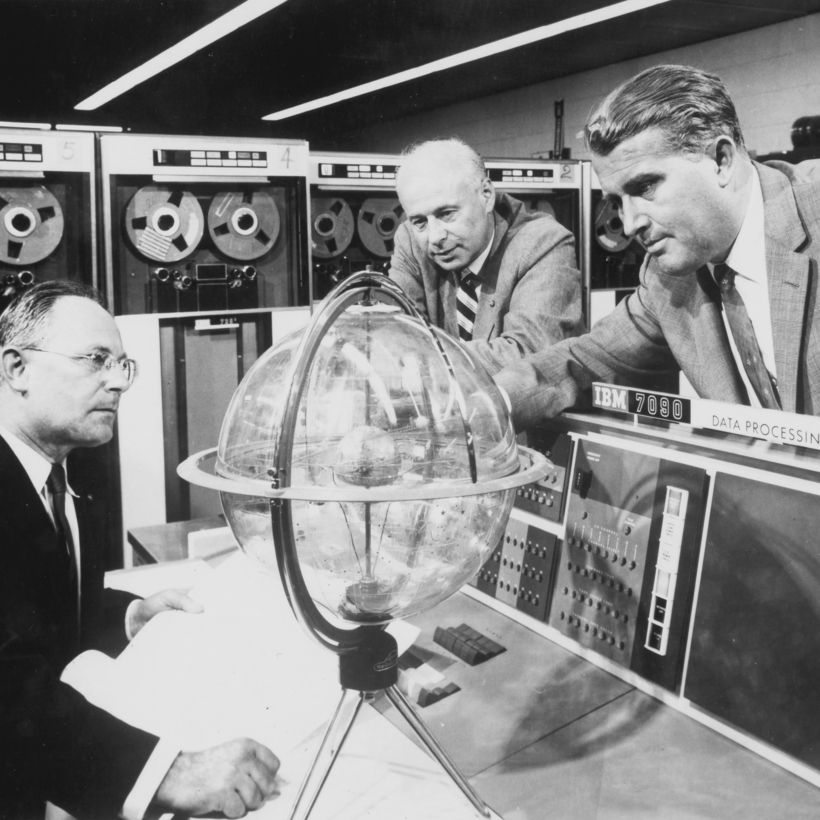Can this be only the second novel by Robert Harris set during the Second World War? Surprisingly, yes. His alternative history, Fatherland (1992), envisaged postwar survival for Hitler. Archangel (1998) depicted the spirit of Stalin reincarnated in a son. Munich (2017) reimagined the lead-up to war. Only Enigma (1995), about the Bletchley codebreakers, takes place in the period.
Bletchley features briefly in V2, which covers five days in November 1944 when the Germans’ fearsome rocket bombs rained down on London. The earlier V1s could be seen and heard before silently descending, giving time to take cover. Vengeance Weapon Two struck without warning. Sixty-five seconds after takeoff its fuel supply was cut, its one-ton warhead primed. “The unpowered rocket was now ballistic, following the same parabolic curve as a stone flung from a catapult.” Its impact was horrendous.
In V2 24-year-old Kay Caton-Walsh experiences the eerie sequence of the rocket’s arrival: an ominous change in air pressure, then the explosion, followed instantly by a sonic boom and the whoosh of the incoming missile. Kay is a WAAF officer in the Central Interpretation Unit at RAF Medmenham and has analyzed aerial photography of the Baltic base where the V2 was built. After rockets aimed at Charing Cross explode across outer London, she is dispatched with a small team of women to Mechelen in recently liberated Belgium to ascertain where the missiles on their mobile launchers were fired from. If these women, armed with slide rules, can combine radar evidence of the rocket’s trajectory with coordinates of its impact point, it is hoped they can calculate its parabolic curve and establish the origin. Spitfires armed with 250-pound bombs can then be scrambled to destroy the launcher before it is dismantled.
The eerie sequence of the rocket’s arrival: an ominous change in air pressure, then the explosion, followed instantly by a sonic boom.
As often in Harris’s fiction, the enterprise becomes a race against time. The women have six minutes to complete their calculations so the Spitfires can hit their target. As tension mounts in Mechelen, anger and desperation escalate in Scheveningen, the German base for the launches in the occupied Netherlands, just 70 miles away. As in Munich, chapters alternate between British and German protagonists. Kay’s counterpart is Dr Rudi Graf, an expert engineer who has worked on rockets under the visionary Wernher von Braun (a charismatic, but ruthless historical figure) since their conception as vehicles to the moon.
Still only 32, Graf is disillusioned with the war and disgusted with his role in enabling atrocities such as slave labor and the shooting of civilians. He has been interrogated by the Gestapo. Trapped in a futile, murderous project, he feels like a man “bitten by a venomous spider” observing his limbs succumb to paralysis. He is in fact an archetypal Harris hero — the secret dissenter at odds with officialdom, the man of reluctant conscience.
With its tense plot and familiar characters, some readers may anticipate the novel’s own parabolic curve. But this means it offers the satisfactions we expect. Spies and informers lurk. Period details are piquant, but not overdone. Kay eats eggs “too chewy to be anything other than powdered”. Each WAAF officer is allowed four inches of hot water a week. Names of military ranks and units are all present and correct. Technical sections about the rockets, though occasionally droning, are astonishingly precise.
Above all there’s suspense. As Graf and Kay plot and counterplot, questions rise and fall like rockets. Will Kay calculate in time to enable destruction of the site? Will Graf stay dutiful or defect? Will Kay and Graf ever share the same chapter? V2 will keep you pinned on a compelling trajectory.

